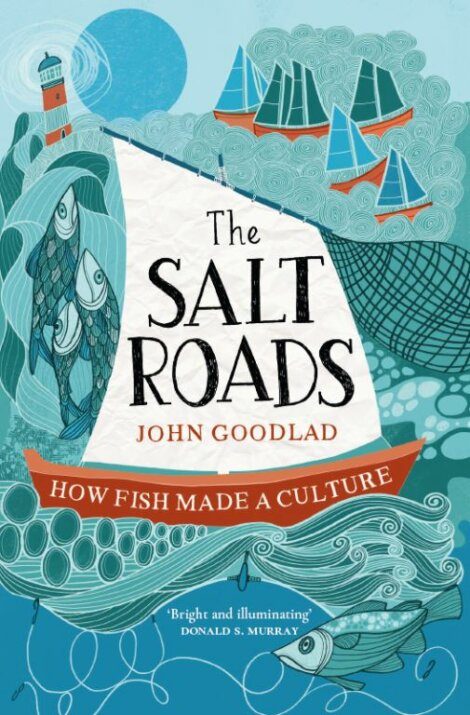Marine / New book explores Shetland’s ‘natural link with Europe’ through its fishing industry
SOME of Shetland’s unexpected historic links and connections with Europe are being explored in a new book by author John Goodlad who tells the extraordinary story of how salt fish from the isles became one of the staple foods on the Continent.
The Salt Roads, to be published this week, takes the reader to the wild waters of the North Atlantic and tells the story of how over the centuries the local fishing industry has not only inspired and affected Shetland’s culture, but also shaped people far beyond our shores.
The book explores in far greater detail some of the aspects touched on in Goodlad’s previous publication The Cod Hunters, which was shortlisted for best maritime book of 2020 by the Maritime Foundation.
“It’s about three iconic Shetland fisheries, the Haaf, cod and the herring boom,” the former Shetland Fishermen’s Association chief executive said.
“One of the themes running through all of them is Shetland’s natural link with Europe – Shetland has been connected to Europe in a very powerful economic and cultural way.
“This is not a history of the fishing industry but about people and how art runs through all of this. Another theme is sustainability.”
From the middle of the 19th century onwards cured fish, first cod and later herring, became an essential part of the diet of millions of people on the Continent.
“Salt fish was absolutely enormous in Europe,” Goodlad said. “It would be wrong to think that Shetland was the biggest supplier into Europe, but the Shetland salt fish was not insignificant; it also eventually was able to get into Basque country because it its high quality.”
Cod became a staple food in northern Spain in terms of quality and being very sought after, but it was herring landed and processed in Shetland that fed millions of impoverished people in eastern Europe from the start of the 20th century.
Become a member of Shetland News
Speaking to Shetland News earlier this month, Goodlad said: “The Dutch had started exporting herring to eastern Europe.
“By 1905 Shetland was called the herring capital of Europe; for many years more than two million barrels of herring left Shetland every year.
“That was going to Hamburg, to Lübeck, to Königsberg, a lot to Petersburg and some to Stettin.
“And then the salt herring went from these Baltic ports quite far inland, especially in Russia and in Poland where the rural poor lived in appalling poverty, Jews in particular. Salt herring was a cheap source of protein.
“A barrel of salt herring was often the difference to get through a severe Siberian winter or not – and Shetland was a big player in that whole salt fish trade.”
Goodlad said the book developed “organically” after having “really enjoyed” speaking to and hearing the stories of so many people as part of his research for the Cod Hunters.
And when the Covid pandemic hit, he found himself at home with plenty of time at hand to start working on The Salt Roads, which is being published by Birlinn.
To be launched in Orkney on Friday (2 September), Goodlad will be hosting a talk and signing at Shetland Library on Thursday 8 September starting at 7pm.
He will also speak at Uyeasound Hall on 22 September as part of the Wordplay book festival, before appearing at the Scottish Fisheries Museum at Anstruther at the end of September and also at the Highland book festival in Mallaig in November.
Become a member of Shetland News
Shetland News is asking its many readers to consider paying for membership to get additional features and services: -
- Remove non-local ads;
- Bookmark posts to read later;
- Exclusive curated weekly newsletter;
- Hide membership messages;
- Comments open for discussion.
If you appreciate what we do and feel strongly about impartial local journalism, then please become a member of Shetland News by either making a single payment, or setting up a monthly, quarterly or yearly subscription.






























































